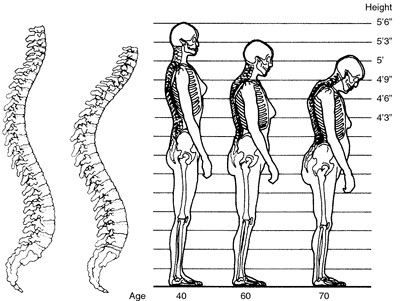Weight Loss
Is this section of the my dietary protocol, I will cover some of the consequences of obesity. My hope is that you will take this issue seriously, not because of the superficial way society judges overweight individuals, but because of how it is affecting your health - physically, emotionally and mentally.
Then, on the next installment of this blog, I will provide you with viable solutions that I have used with my patients to bring their body fat percentages into a healthy range.
Please note that weight loss is now a multi-billion dollar industry that is full of hype, empty promises, and quick fixes that seldom deliver on their promises. My objective of this weight-loss section is to help you cut through that hype so you can find effective ways of dealing with this common condition.
After we get through the section on conditions related to obesity, I will give you viable solutions to help deal with this issue. As we go through this information please keep in mind two key factors:
Then, on the next installment of this blog, I will provide you with viable solutions that I have used with my patients to bring their body fat percentages into a healthy range.
Please note that weight loss is now a multi-billion dollar industry that is full of hype, empty promises, and quick fixes that seldom deliver on their promises. My objective of this weight-loss section is to help you cut through that hype so you can find effective ways of dealing with this common condition.
After we get through the section on conditions related to obesity, I will give you viable solutions to help deal with this issue. As we go through this information please keep in mind two key factors:
- Just because you have never been able to reach your weight loss goals does not mean there are no viable solutions for you. Over 90% of individuals who follow my weight-loss recommendations reach their goals.
- Please, don’t beat yourself up over your current weight. Our society has some very warped ideas about what your ideal weight should be. As I say to my wife, I would be very disappointed if she lost all her curves.
Before we get into specific recommendations about how to get your body-fat percentage within normal ranges, let us first review why we should take the extra weight we are carrying around seriously.
Conditions Related to Obesity
It
always amazes me that patients do not see the correlation between their current health status, and the extra weight that they are carrying around in their bodies.
Here is a list of conditions/states that are directly related to obesity:
Here is a list of conditions/states that are directly related to obesity:
- Asthma.
- Benign Prostatic Hyperplasia.
- Cancer (obesity has been linked to the following types of cancer: breast, colon,endometrium, kidney, esophagus, gallbladder, pancreas , and ovarian).
- Cardiovascular disease.
- Cognitive decline (Individuals who are obese, with high blood pressure, and other risk factors (metabolic abnormalities) can experience a faster decline in their cognitive function. August 21, 2012, Neurology)
- Depression (Research has shown that obese people have clinical depression scores that are as bad, or worse than, for patients suffering from chronic pain).
- Diabetes.
- Erectile dysfunction (obesity damages your cardiovascular system and decreases your testosterone levels).
- GERD.
- Gout.
- Heart disease (coronary heart disease, congestive cardiac failure).
- Headaches.
- High Cholesterol.
- Hormonal dysfunctions/imbalances.
- Hypertension - High blood pressure (two-thirds of obese individuals are at risk of hypertension).
- Inflammatory conditions.
- Insomnia.
- Migraine headaches.
- Musculoskeletal Injuries such as back pain, ankle pain, knee pain, hip pain, shoulder pain, neck pain, wrist pain, elbow pain, wrist pain, and hand pain.
- Osteoarthritis.
- Osteoporosis.
- PMS.
- Sexual dysfunction (impairs sexual performance and decreases sex drive).
- Slow healing.
- Strokes.
- Testosterone decrease. (In both men and women this fat-burning, muscle-building hormone is critical to weight loss).
- Urinary Incontinence.
At Kinetic Health, our clinical specialization is the treatment of musculoskeletal
injuries. In most cases, we can help the
patient resolve 80%-90% of their injuries in only a few short weeks (depending
on severity of the condition and age).
In the remaining cases, where I see little or very slow progress, the lack
of response is often related to the patient's body-fat percentage issues.
Like
it or not carrying too much weight around is like a ticking time bomb,
especially if that weight is around your mid section.
- People who store fat
around the middle (abdomen, chest, and internal organs) have an "apple"
shape, and are more prone to diabetes (type II diabetes is at epidemic
levels), heart disease, high blood pressure, gall bladder problems,
systemic inflammation, and the wide array of health issues associated with
inflammation.
- People with a "pear" shape, who store weight on their hips and thighs are at a lower risk for these conditions.
Inflammation and Obesity
Here is one fact you cannot get around. If you are
obese/overweight, your body produces an increased level of pro-inflammatory compounds (such as prostaglandin E2). On the surface, these inflammatory compounds may not seem like a big deal, until you do a little investigation. Take a look at some of common conditions that are related to increased levels of inflammation in your body:
- Alzheimer’s disease
- Arthritis
- Atherosclerosis
- Cancer
- Chronic pain
- Crohn’s disease
- Dementia
- Diabetes
- Emphysema
- Heart disease
- High blood pressure
- Insulin resistance
- Musculoskeletal conditions
- Osteoporosis
- Parkinson’s disease
Osteoporosis and Obesity
Take a good look at this diagram, wouldn't you rather have the silhouette of the 40 year old at age 70, than the 70 year old at age 50. Sounds like a silly question but it really is not. There are numerous steps you can take to slow down osteoporotic degeneration.
The first step is to get rid of any extra weight you are carrying.
Osteoporosis is a condition that occurs when the quality and quantity of bone tissue is weakened, making your bones more susceptible to bone loss and breakage. It also prevents your bones from re-modeling and re-building themselves.
The relationship between obesity and osteoporosis has been widely studied. Initially studies indicated that obesity (increase weight ) may help prevent osteoporosis, but this is not true. More recent studies have now indicated that the same nutritional problems associated with obesity lead to Osteoporosis. The two conditions are linked.
The first step is to get rid of any extra weight you are carrying.
Osteoporosis is a condition that occurs when the quality and quantity of bone tissue is weakened, making your bones more susceptible to bone loss and breakage. It also prevents your bones from re-modeling and re-building themselves.
The relationship between obesity and osteoporosis has been widely studied. Initially studies indicated that obesity (increase weight ) may help prevent osteoporosis, but this is not true. More recent studies have now indicated that the same nutritional problems associated with obesity lead to Osteoporosis. The two conditions are linked.
Relationship of Obesity with Osteoporosis Lan-Juan Zhao, Yong-Jun Liu, Peng-Yuan Liu, James Hamilton, Robert R. Recker and Hong-Wen Deng - The Journal of Clinical Endocrinology & Metabolism Vol. 92, No. 5 1640-1646
Osteoporosis - Some Important Facts
Osteoporosis should be take seriously, and you should do everything you can to avoid it. Consider some statistics about osteoporosis.- Over 80% of all fractures in people over fifty years of age are caused by osteoporosis.
- Osteoporosis causes 70-90% of hip fractures annually.
- 37% of men and 28% women and who suffer a hip fracture will die within the next year.
- Only 44% of people, discharged from hospital after a hip fracture, return home.
Osteoarthritis and Obesity
Osteoarthritis
is a complex degenerative condition that affects the joints in your body.
Primary Osteoarthritis affects the weight-bearing joints in your knees, feet,
hips, and lower back, as well as the fingers and neck.
Osteoarthritis is a condition that is caused by excessive and long-term wear-and-tear of your joints, and is often accompanied by inflammation of the area with pain, swelling, and stiffness.
Osteoarthritis is a condition that is caused by excessive and long-term wear-and-tear of your joints, and is often accompanied by inflammation of the area with pain, swelling, and stiffness.
Primary
Osteoarthritis begins by affecting the cartilage of your joints. Healthy
cartilage allows bones to glide over each other and assists in absorbing the
shock and stress of movement. In osteoarthritis, the top layer of the cartilage
breaks down and wears away, allowing the bones under the cartilage to rub against
each other. The rubbing causes inflammation or swelling, pain, and decreased
mobility of that joint. Over time, bone spurs may grow and the joint may lose
its normal shape.
Obesity increases the chances of developing
osteoarthritis since the excess weight multiplies the pressure and forces on
the joint, leading to more wear and tear over time.
Even
moderate decreases (15 lbs over 6 weeks) in weight can significantly reduce the
amount of pain caused by osteoarthritis. Stephen Messier, a lead author of a
noted study showed that "The accumulated reduction in knee load for a
1-pound loss in weight would be more than 4,800 pounds per mile walked".
In other words,
for every pound of weight-loss, you will find a four-pound reduction in the
stress experienced with each step!
The
effects of even a moderate weight-loss is especially noticeable in weight
bearing joints such as the knee and hip. This can result
in significant improvement in quality of life. This is an achievable goal, and
can help you to live a more pain-free and enjoyable life.
In Part 6 of "Dr. Abelson's Nutritional Program" we will give some great ideas on what YOU can do to lose the excess weight, and bring your life back into balance.
To purchase our internationally best-selling books, visit www.releaseyourbody.com.
For information about our clinic in Calgary, Alberta, please go to www.kinetichealth.ca.
(COPYRIGHT KINETIC HEALTH 2013 – ALL RIGHTS RESERVED)





Your blog has always been a good source for me to get quality tips on blogging. Thanks once again
ReplyDeleteHealth Programs Calgary